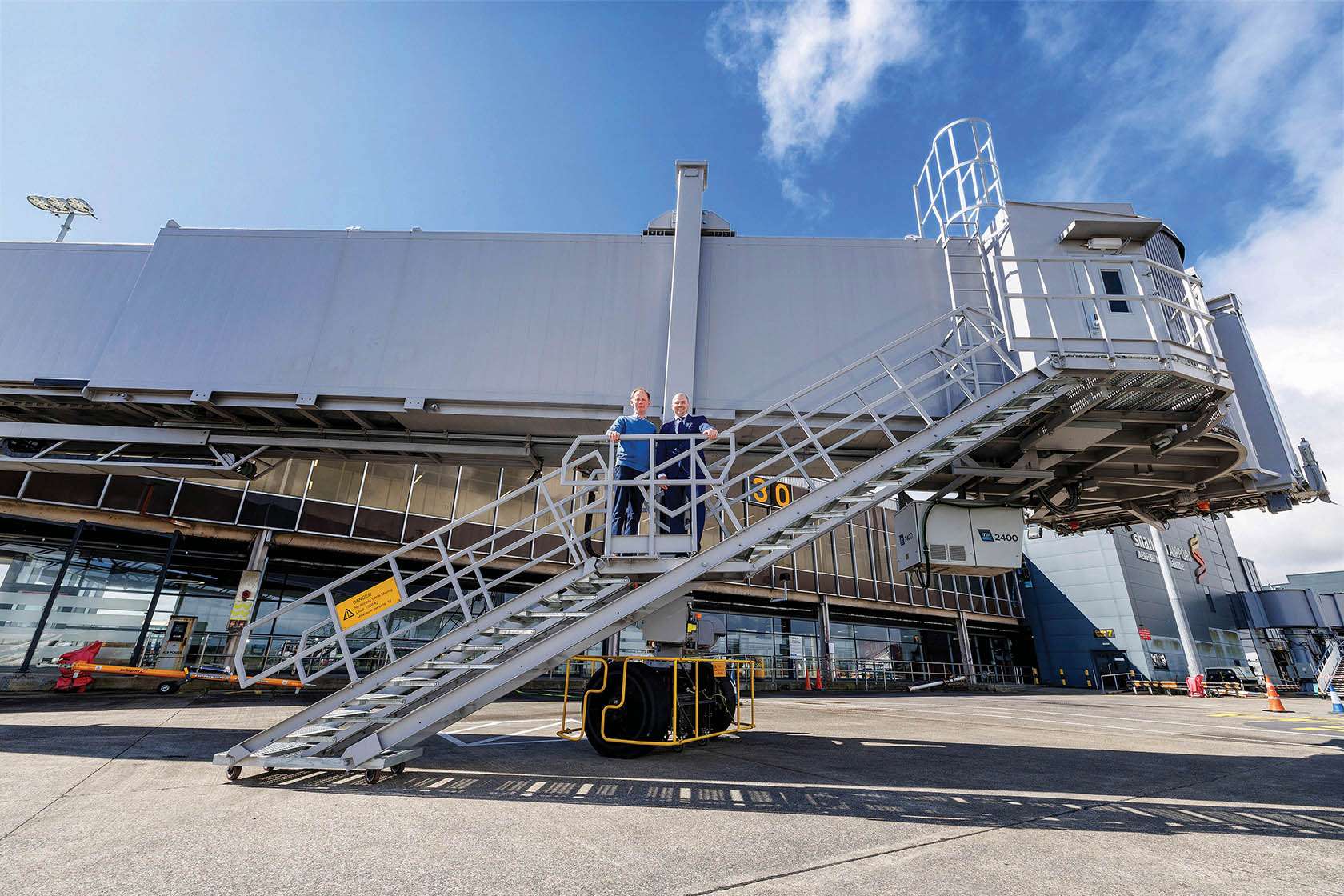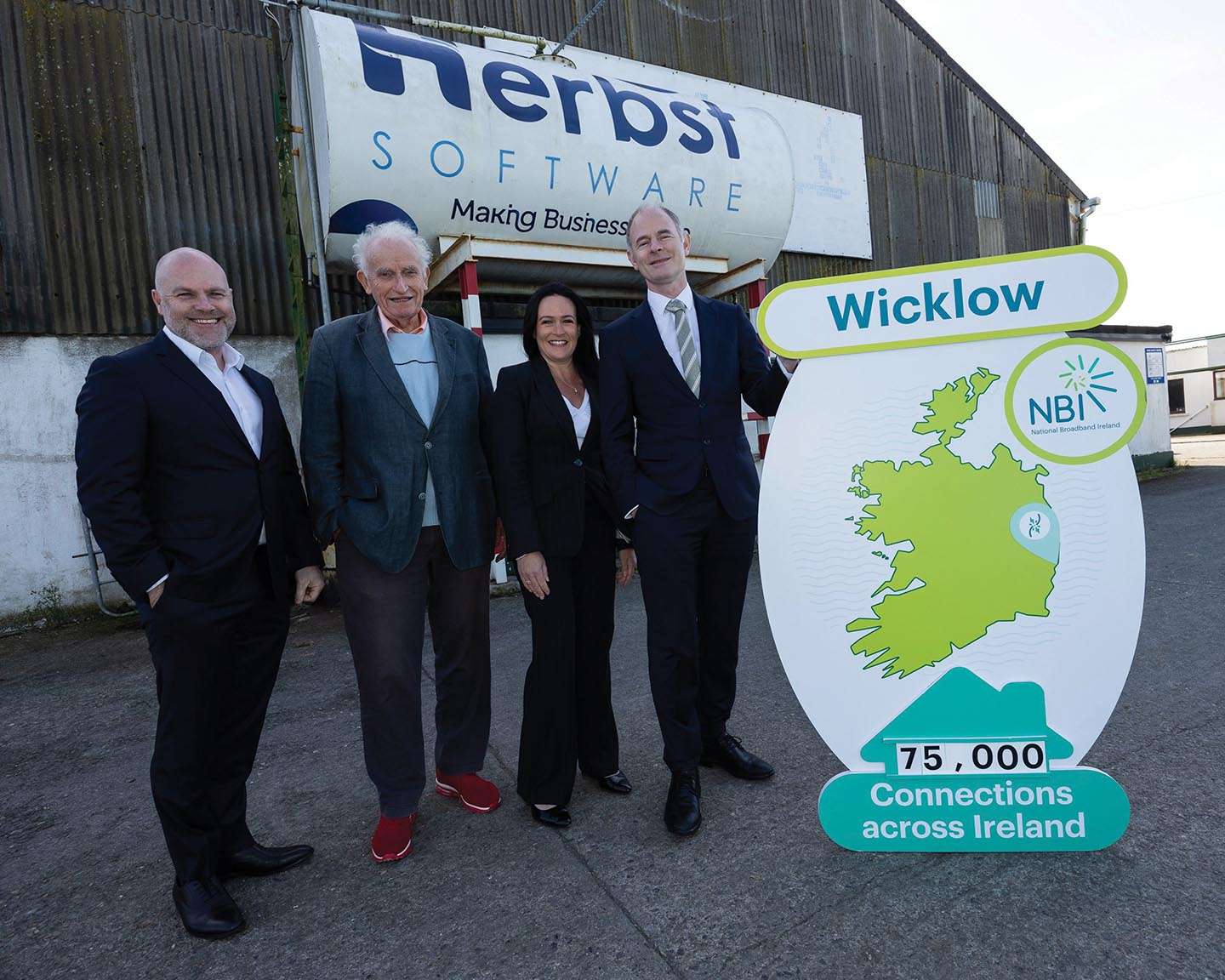INFRASTRUCTURE IRELAND
A look at the infrastructure projects helping to build a better Ireland
New airbridges at Shannon Airport
The Shannon Airport Group has completed the final phase of its multi-million euro airbridge enhancement programme, which saw the replacement of six airbridges at Shannon Airport. The new airbridges will allow passengers to board aircraft directly from the airport terminal building without exposing them and airline crews to the elements. One airbridge was replaced between July 2022 and early 2023, with phase two of the project completed in recent weeks as the handover of the final five new airbridges took place.

The airbridge upgrade project, which totalled a cost of over €3.1 million, saw the installation of six state-of-the-art airbridges, which are fully equipped with the latest passenger and aircraft safety technology and capable of accommodating over 22 types of large aircraft, excluding some smaller regional jets.
The new airbridges were manufactured by CIMC-Tianda Airport Support in China, one of the largest global suppliers of Passenger Boarding Bridges. With a lifespan of at least 20 years, the bridges not only enhance passenger experience but also reflect The Shannon Airport Group’s commitment to investing in durable and sustainable infrastructure solutions across its operations. Each bridge weighs 30 tonnes, with the installation of individual bridges taking approximately two weeks to complete. The combined weight of the six airbridges (180 tonnes) is the equivalent to 180,000 1kg bags of sugar.
The airbridge enhancement programme is part of a series of infrastructure upgrades completed by The Shannon Airport Group in recent years as the airport rebuilds its operations post-Covid. Projects completed with support from the Department of Transport under the Regional Airports Programme include Shannon’s €2.5 million hi-tech security screening system and a €5.3 million airfield rehabilitation project.
Commenting on the completion of the airbridge enhancement programme, Niall Kearns, Airport Director, Shannon Airport said: “Here at The Shannon Airport Group, we remain focused on future proofing our airport infrastructure in line with our commitment to ensuring the most efficient and seamless experience for our passengers. We are delighted to be heading into the busy summer travel season with six new airbridges in operation. We are very grateful for the funding support we have received from the Department of Transport, under the Regional Airports Programme, which made it possible for us to complete these significant upgrades.”
‘Layers of Dublin Port’ mapped for first time
Dublin Port Company (DPC) has mapped its rich natural, industrial and cultural heritage in a new Conservation Strategy, launched by Minister of State Malcolm Noonan. The document maps the layers of Dublin Port which include findings on the floor of Dublin Bay, discoveries underground from archaeological digs and the industrial history of the built environment still standing on the Dublin Port estate. This is the first time Dublin Port’s heritage has been mapped on this scale in its 300-year history.

A key pillar of the Strategy is Port-City Integration, the framework through which all aspects of Dublin’s maritime heritage, from structures as significant as the Great South Wall to the historic photographs, maps and drawings of the priceless Port Archive, can be preserved and celebrated. This broader vision for Dublin Port as a landscape of living heritage involves promotion of a range of initiatives across cultural heritage practice, the historic built environment, architectural quality, community outreach and climate change action to ensure Dublin Port remains safe and is increasingly accessible to the public.
Included as part of the strategy is a mapped timeline, drawn from the Port Archive, which charts the Port’s journey to the east from the 1600s to the present day. Readers can trace the establishment of the North and South Lotts and the current Dublin Port estate, which were reclaimed from the sea over centuries. This timeline gives context to the central role port activity has played in the life of the city. Drawing on Baukultur, a concept outlined in the Davos Declaration, it argues for a culture-centred approach to sustainably developing the built environment. Utilising this key concept, the Strategy aims to establish a vibrant landscape of industrial heritage across Dublin Port, encompassing the ordinary and the extraordinary.
The scope of the Conservation Strategy includes statutorily-protected monuments within the Port estate and those listed on the National Inventory of Architectural Heritage, like the former Odlums Flour Mills. The preservation of this varied heritage landscape can help the public reach a greater understanding of Ireland’s economic, natural and social history.
The Strategy spotlights plans to open up heritage assets to the public, including the original Graving Dock No. 1, which currently lies below ground beside DPC’s performance venue The Pumphouse and will be excavated as part of the Alexandra Basin Redevelopment (ABR) Project.

Through cataloguing Dublin Port’s heritage assets, the project team aims to contextualise Dublin Port’s deep historical connections to the docklands and the wider city. Barry O’Connell, Chief Executive of Dublin Port Company, said “The story of Dublin Port is one that is crucial to our economy, but also to our social history. The Conservation Strategy allows us all to come to a richer understanding of the maritime and industrial heritage beneath our feet and all around us. This can serve as a roadmap for future planners, both inside and outside the Port, to help make the area a welcoming destination for the public.”
National Broadband Plan passes 75,000 connections nationwide
National Broadband Ireland (NBI) has announced it has connected over 75,000 homes, farms and businesses under the National Broadband Plan (NBP) to high-speed fibre broadband. NBI and Minister Ossian Smyth marked the milestone at Herbst Software in Wicklow which recently joined the network. NBI is also celebrating another milestone as it confirmed it has now passed 40% of the farms and businesses included in the Intervention Area. In total, NBI will connect 91,999 farms and businesses in rural Ireland to high-speed broadband, with 36,972 of these now able to avail of a connection.
Businesses connected by National Broadband Ireland have access to additional services and products that offer increased download and upload speeds to ensure no bottlenecks during busy periods and times of elevated usage. Standard speeds across all NBI connection types guarantee speeds of 500Mbit/s, with additional products available that can deliver speeds of up to 2Gbit/s.
Peter Hendrick, Chief Executive Officer, National Broadband Ireland, said: “Connections to NBI’s network have more than doubled in the last 12 months with over 75,000 premises now connected. Over 232,000 premises are ready to connect by signing up with one of our 62 retail partners. We’re hearing back from connected customers that access to our network is transformational, especially for businesses based in rural parts of the country like Herbst, which is already utilising its new connection to support its operations across Ireland. “NBI’s network is designed to cater for all use cases, from everyday streaming at home to the most data-intensive commercial operations. Our guaranteed minimum speeds are best in class and where businesses need more, we can offer more.”
Minister Ossian Smyth, Minister of State with responsibility for Public Procurement, eGovernment and Circular Economy, said: “The National Broadband Plan continues to see very strong demand. We are seeing that take-up of fibre connectivity for homes and businesses is increasing substantially as it is deployed to areas where it had previously been unavailable.
“Businesses and families can now access high-speed internet and join 75,000 Irish households, farms and businesses who have signed up, with the service currently available to over 232,000. The connection of businesses like Herbst Software shows that even if your business is based in a remote part of the country, you can still have access to fast and reliable broadband.”
Michael Herbst, Chairman of Herbst Group, said: “Gaining access to the NBI fibre network has been an important step for our business operations. For a company like ours, with offices in different parts of the country, reliable and fast internet is so important to allow our teams to work together efficiently.
“High-speed broadband isn’t just a connection, it’s a lifeline for modern business operations in rural Ireland. It’s a tool that will allow us to continue to innovate and grow into the future.”
_____________________________________________________________________________________________________________
Michael McDonnell Managing Editor of Irish Construction Industry Magazine & Plan Magazine